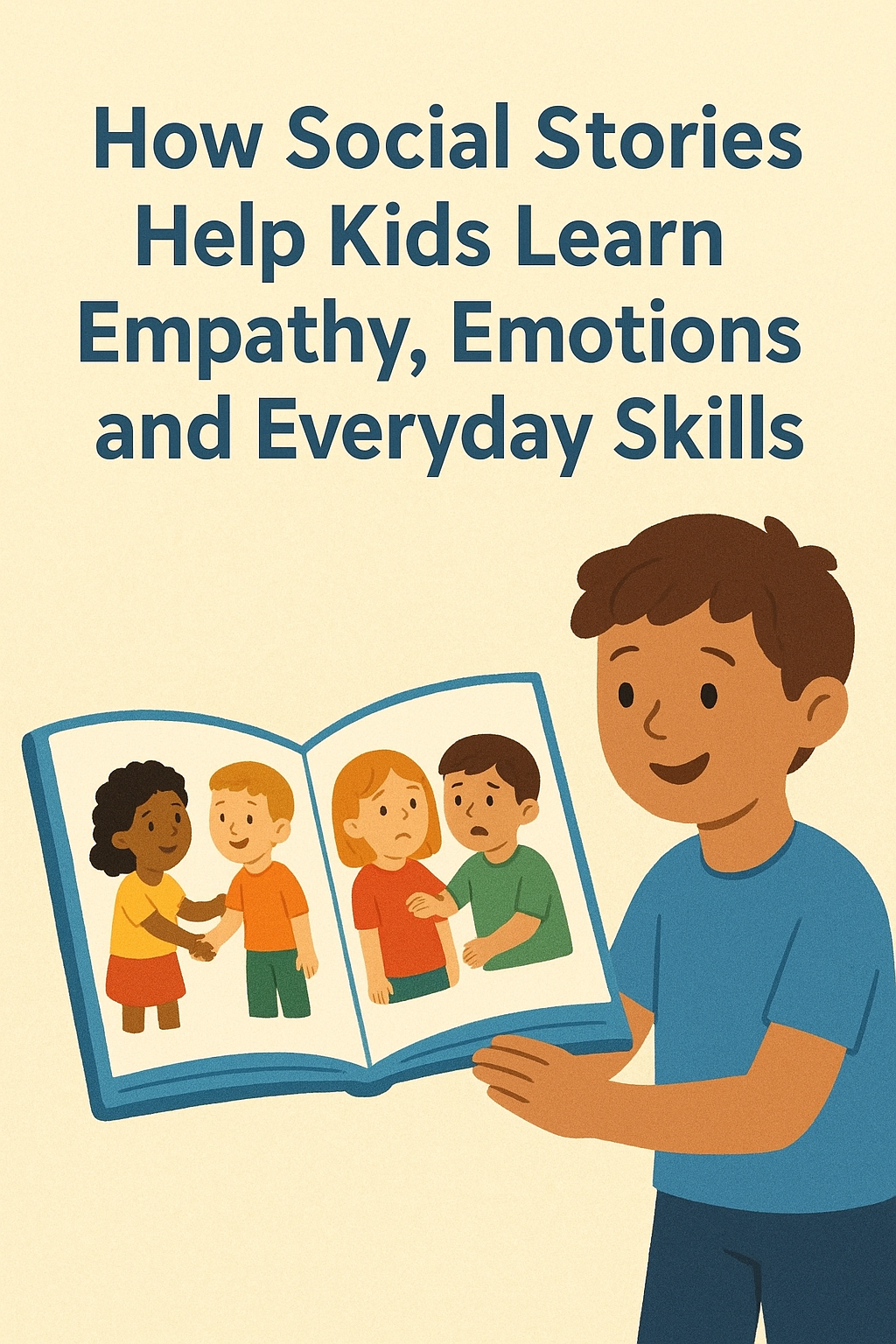Children often learn best through stories. From fairy tales to modern picture books, storytelling helps them understand the world, emotions, and relationships. Social stories take this natural learning process a step further. These are structured short stories designed to teach children about specific social situations, appropriate behavior, and emotional responses. Used by parents, teachers, and therapists, they simplify complex ideas like sharing, friendship, or coping with frustration in ways kids can relate to.
Today, many families are discovering the value of social personalized children’s books to support emotional and social development. These custom stories make learning both fun and meaningful, offering a safe space for kids to explore their feelings and practice empathy.
What Are Social Stories?
Social stories were first developed by educator Carol Gray in the 1990s to support children with autism. The idea quickly gained popularity for all children, as it helps them understand how to act or feel in real-life situations. A social story typically presents a specific scenario, such as going to school, making friends, or handling disappointment, in simple language and visuals.
Unlike regular storybooks, social custom storybooks for kids are designed with intention. Every word, image, and character serves a purpose: to model behavior and show the positive outcomes of thoughtful actions. For example, a story might show a child waiting patiently in line or apologizing after making a mistake.
If you want to explore practical examples and ideas, you can visit KidScribe.ai’s Social Stories, which explains how such stories are created to meet children’s unique developmental needs.
According to the Autism Society and the Child Mind Institute, social stories can reduce anxiety, increase cooperation, and help kids better understand emotions in themselves and others.
The Psychology Behind Social Stories
The power of social stories lies in how children’s brains process information. Research from the American Psychological Association (APA) shows that stories activate multiple areas of the brain, helping children link abstract concepts like kindness or patience to real-world behavior.
Storytelling also triggers emotional engagement. When children identify with a character, they mirror that character’s emotions. This process strengthens empathy and builds social awareness. Through repetition, relatable plots, and gentle reinforcement, children internalize lessons and learn how to respond positively to everyday challenges.
Studies by UNICEF and Harvard’s Center on the Developing Child highlight that storytelling improves emotional vocabulary and problem-solving skills. When a child reads or listens to a social story about helping a friend, they practice recognizing emotions and imagining different perspectives.
Building Empathy Through Stories
Empathy is not something children are born with; it is learned through observation and experience. Social stories create those learning moments by showing diverse characters who experience joy, sadness, or frustration just like real children.
For instance, a story about a child feeling left out during playtime can help readers recognize that emotion and think about ways to include others. Similarly, stories about kindness and cooperation teach children to value fairness and respect.
Parents and educators can use a social children’s book maker online to create customized stories that reflect each child’s environment. Personalizing names, settings, and challenges makes the story more relatable, which improves emotional connection. Whether a child struggles with sharing toys or adjusting to a new school, a personalized story can help them visualize positive outcomes and feel empowered.
Learning Emotions and Everyday Skills
Beyond empathy, social stories teach children how to manage their own feelings and behaviors. By reading about characters who face anger, fear, or excitement, kids learn that emotions are normal and can be handled in healthy ways.
For example, a story about feeling angry might show a child taking deep breaths or talking to an adult. This practical modeling teaches self-regulation. Other stories might focus on everyday routines such as brushing teeth, bedtime, or classroom manners.
Early childhood experts at Zero to Three note that children benefit from predictable and visual learning methods. Social stories fit this perfectly by providing consistent examples of what to expect in common situations. Over time, these lessons help children build confidence and independence.
How Parents and Educators Can Use Social Stories Effectively
Parents and teachers play a key role in making social stories impactful. Reading a story just once isn’t enough; consistency and discussion make a difference. After reading, ask the child what they learned or how they might handle a similar situation. Encourage them to retell the story in their own words.
Educators can integrate social stories into group activities or classroom discussions. For younger children, pairing the story with role-play or drawing helps reinforce the message. For older kids, reflection questions can deepen understanding of emotions and choices.
When creating or choosing a story, keep it short, positive, and realistic. Focus on everyday events and use clear, age-appropriate language. Collaboration between parents, teachers, and therapists ensures the stories stay relevant to each child’s needs.
The Future of Social Storytelling
With advancements in technology, creating personalized stories has never been easier. Modern platforms now allow parents and educators to design storybooks featuring their child’s name, interests, and real-life experiences. This customization increases engagement and retention.
Digital storytelling also promotes inclusion. Children from diverse backgrounds can see characters who look and speak like them, encouraging a sense of belonging. As awareness of emotional literacy grows, social storybooks are likely to become a standard part of both home and classroom learning.
FAQs
1. What age group benefits most from social stories?
Social stories are most effective for children aged 3 to 10. Younger kids learn basic routines and emotions, while older ones can explore complex topics like empathy and problem-solving.
2. Can social stories help children with special needs or autism?
Yes. Originally created for children on the autism spectrum, social stories are now widely used for all kids. They support emotional understanding and reduce anxiety during unfamiliar situations.
3. How often should parents use social stories?
Regular reading is ideal. Using them daily or a few times a week helps children retain lessons and apply them naturally in real life.
4. Can I write my own social stories for my child?
Absolutely. Parents can create simple stories with clear structure and relatable characters. Keeping them positive, short, and solution-oriented makes them more effective.
Conclusion
Social stories are a gentle yet powerful way to help children understand emotions, practice empathy, and develop everyday life skills. Whether read at bedtime, in the classroom, or through a personalized digital book, they give children tools to express themselves and connect with others meaningfully.
Parents and educators who introduce social stories early support not just literacy but emotional growth, helping kids become kinder, more confident, and ready for the world around them.


